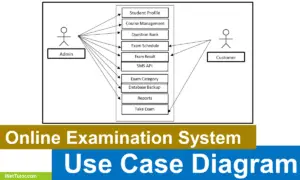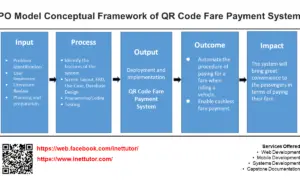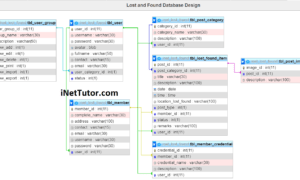Dairy Farm Management System ER Diagram
This article will discuss the step by step process on how to prepare the entity relationship diagram or ERD of the project entitled Dairy Farm Management System.
The capstone project entitled Dairy Farm Management System is a multi-user application that manages the transactions of a cow dairy farm that includes sales records of milk and cow, feed monitoring and vaccine scheduling.
Related articles on the capstone project Dairy Farm Management System
- Dairy Farm Management System Database Design
- Dairy Farm Management System in PHP and Bootstrap
- IPO Model Conceptual Framework of Farm Management System
- Farm Management System Chapter 2 Review of Related Literature
The first step in the development of the Dairy Farm Management System is to prepare the ER diagram that will serve as the basis later on in the creation of the actual database.
We will create and explain the process of making the entity relationship diagram of Dairy Farm Management System.
Let’s start from the symbols used in the ER Diagram.
Entity is represented by the rectangle shape. The entity will be our database table of Dairy Farm Management System later on.
Attribute is represented by the oval shape. This will be the columns or fields of each table in the Dairy Farm Management System.
Relationship is represented by diamond shape. This will determine the relationships among entities. This is usually in a form of primary key to foreign key connection.
We will follow the 3 basic rules in creating the ER Diagram.
- Identify all the entities.
- Identify the relationship between entities and
- Add meaningful attributes to our entities.
Step 1. In the Dairy Farm Management System we have the following entities
- User
- User Group
- Cow Category
- Cow
- Cow Sale
- Feed Monitoring
- Milk Collection
- Milk Sale Collection
- Vaccine Monitoring
Our design of Dairy Farm Management System consists of 9 entities; the specified entities will be our database tables in the design and implementation of Dairy Farm Management System database schema.
We will now draw the entities of the Dairy Farm Management System specified above and it will be represented by a rectangle shape. The image below is the entities identified in the scope of the Dairy Farm Management System.
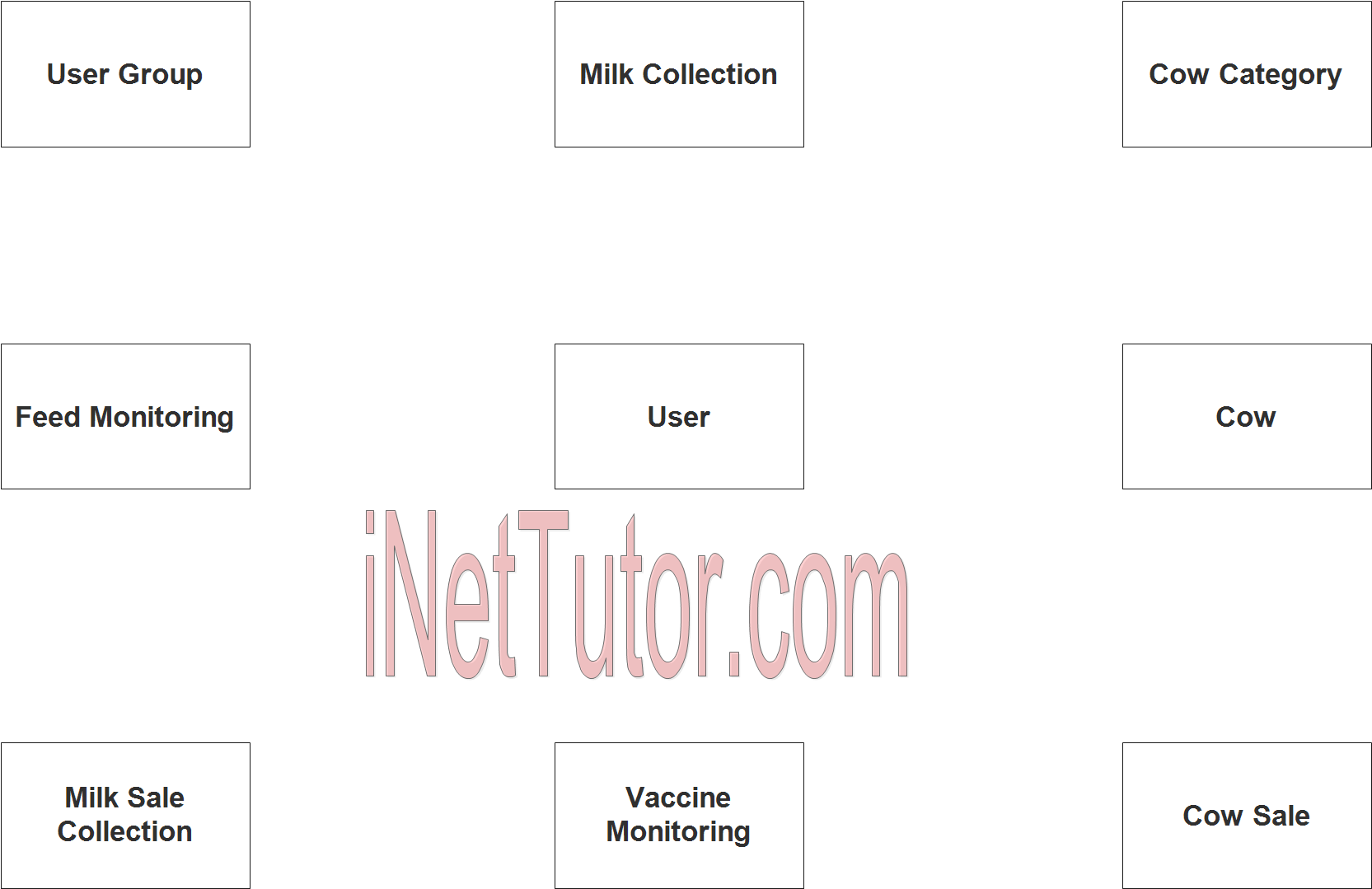
Step 2. After we have specified our entities, it is time now to connect or establish a relationship among the entities.
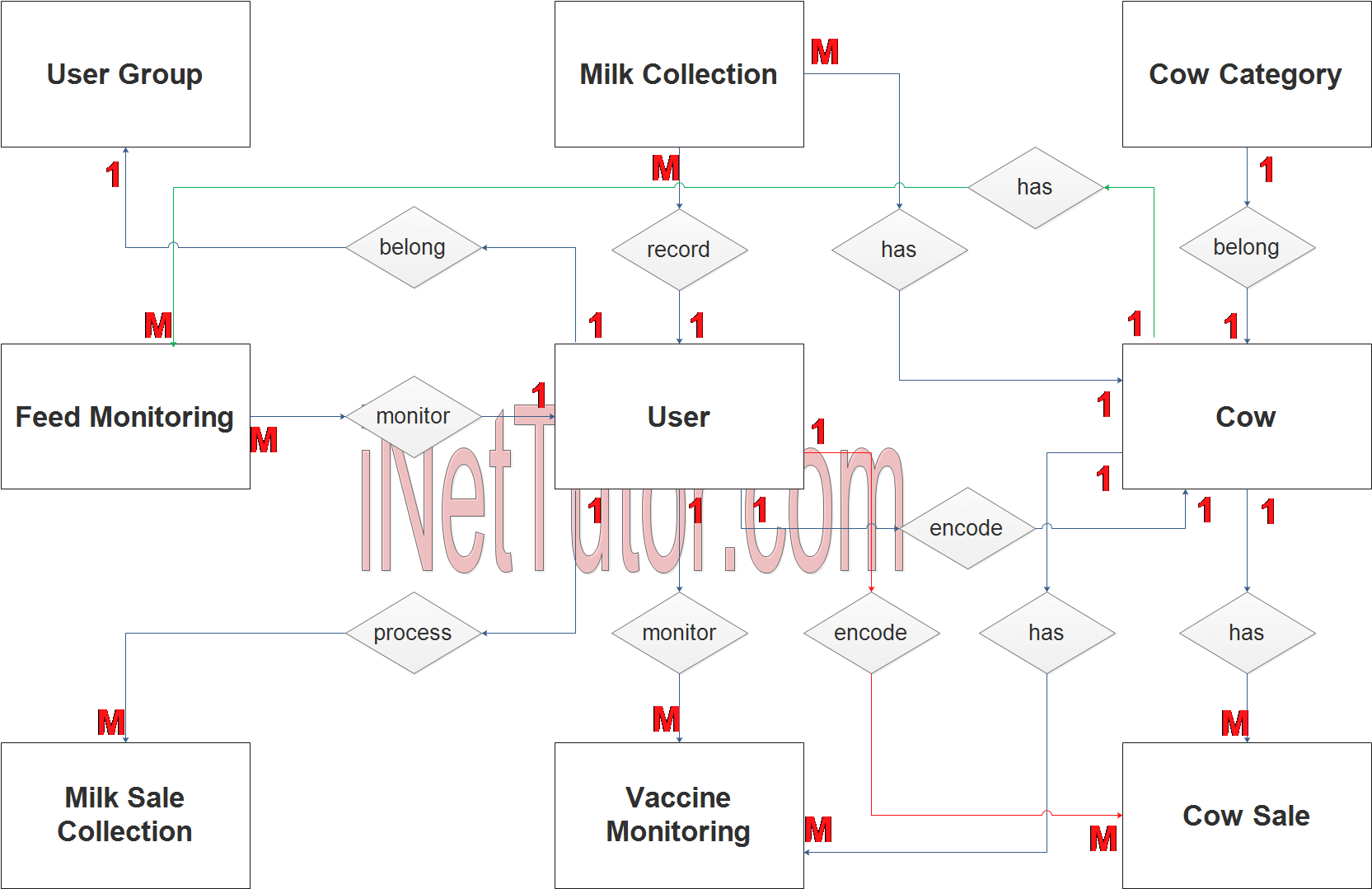
- A user belongs to a specific user group or type with designated privileges, these privileges refers to the function the user can access in the system (1 to 1 relationship).
- The user encode/manage/update the cow information (1 to many relationship). The user type that can manage the cow info is the encoder group.
- A cow belongs to a specific species or cow category (1 to 1 relationship).
- The encoder type of user records the milk collected for every cow (1 to many relationship).
- The farm is selling just not by product of their livestock such as the milk but also the cow itself. A cow sale is being recorded by the cashier type of user (1 to many relationship).
- Cashier records also the transactions on the milk sale (1 to many relationship).
- The medical team of users are responsible for the vaccine scheduling and monitoring of their livestock (1 to many relationship).
- Feed monitoring is also a part of the medical team that needs to be monitored and managed (1 to many relationship).
Step 3. The last part of the ERD process is to add attributes to our entities.
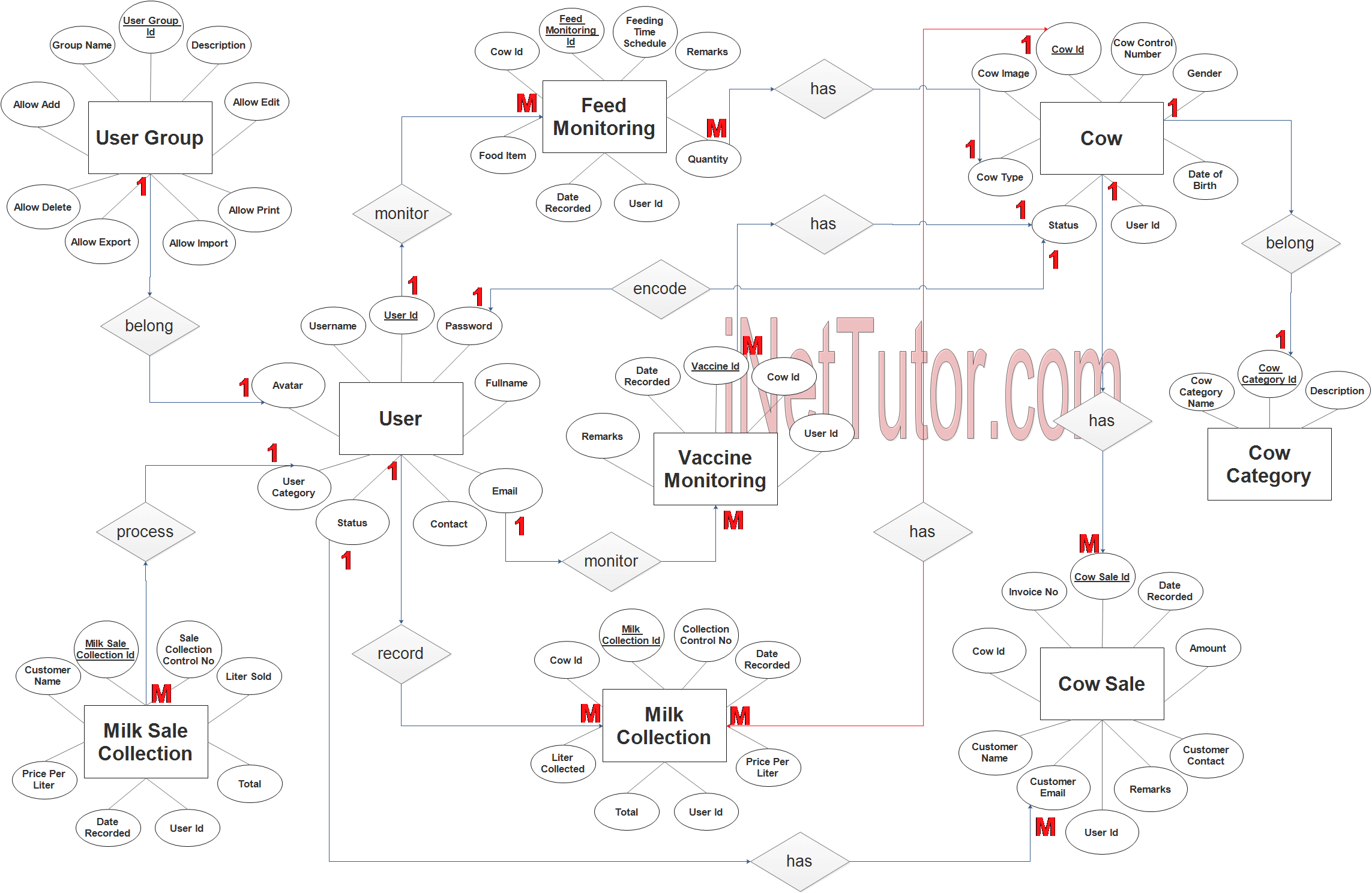
User Entity has the following attributes:
- User ID – primary key represented with underline
- Username
- Password
- Fullname
- Avatar
- User Category – foreign key
- Contact
- Status
User Group Entity has the following attributes:
- User Group ID – primary key represented with underline
- Group Name
- Description
- Allow Add
- Allow Edit
- Allow Delete
- Allow Export
- Allow Import
- Allow Print
Cow Category Entity has the following attributes:
- Cow Category ID – primary key represented with underline
- Cow Category Name
- Description
Cow Entity has the following attributes:
- Cow ID – primary key represented with underline
- Cow Control Number
- Gender
- Cow Image
- Cow Type – foreign key
- Date of Birth
- Status
- User ID – foreign key
Cow Sale Entity has the following attributes:
- Cow Sale ID – primary key represented with underline
- Invoice Number
- Date Recorded
- Cow ID – foreign key
- Amount
- Customer name
- Customer email
- Customer contact
- Remarks
- User ID – foreign key
Feed Monitoring Entity has the following attributes:
- Feed Monitoring ID – primary key represented with underline
- Feeding Time Schedule
- Cow ID – foreign key
- Remarks
- Food Item
- Quantity
- Date Recorded
- User ID – foreign key
Milk Collection Entity has the following attributes:
- Milk Collection ID – primary key represented with underline
- Collection Control No
- Cow ID – foreign key
- Liter Collected
- Date Recorded
- Price per liter
- Total
- User ID – foreign key
Milk Sale Collection Entity has the following attributes:
- Milk Sale Collection ID – primary key represented with underline
- Sale Collection Control No
- Customer Name
- Liter sold
- Price per liter
- Total
- Date recorded
- User ID – foreign key
Vaccine Monitoring Entity has the following attributes:
- Vaccine ID – primary key represented with underline
- Cow ID – foreign key
- Date Recorded
- Remarks
- User ID – foreign key
Note: all attributes with underline represents the primary key of the entity or table.
The next step is to convert the plan designed on ER Diagram into the actual database, please search for the Dairy Farm Management System article which was already posted.
Contact us on our facebook page for the softcopy of the Dairy Farm Management System.
You may visit our facebook page for more information, inquiries and comments.
Hire our team to do the project.
